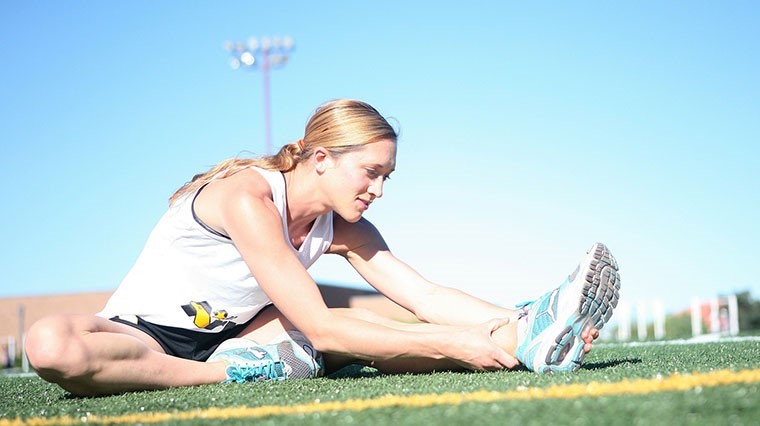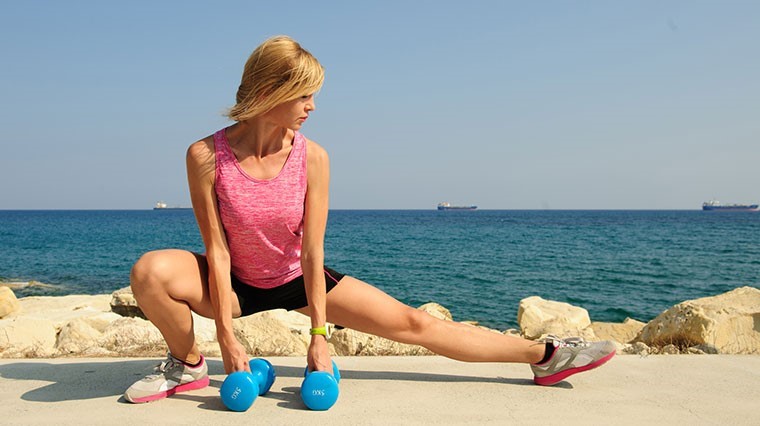6 Bulletproof Tips To Prevent Netball Injuries

As much fun as it would be to wrap yourself from head to toe in bubble wrap to prevent injuries on the netball court, try out these more realistic tips that will help you stay in top form for match day.
Warm Up
10 - 15 minutes of warm up preps your body for intense movement by increasing blood flow to target areas such as your wrists, shoulders, neck, back, hips, knees and ankles, improving muscle efficiency and reducing injury risk.
For netball, warm ups should include aerobic exercises (e.g. a light jog around the court), dynamic ‘moving’ stretches (e.g. arm swings, upper body trunk rotation, squats and leg swings) and netball-specific movement such as rapid direction changes, side steps and short sprints.
Cool Down

Cool down exercises manage lactic acid build up which otherwise may leave you susceptible to muscle pain in the days following the game. They should focus on gradually decreasing your activity to reach the relaxed condition your body was pre-match, and are essential for athletes to recover smoothly.
Include static stretching post-match to gently target major muscle groups - you should feel tension in your muscles but never perform stretches to the point of feeling pain.
Practice Correct Landing Techniques
Practice safe landing techniques to avoid awkward landings that can be damaging to your knees - your body’s natural shock absorbers. Knee injuries are common among netball players, alongside ankle and hand injuries.
Keep your knees shoulder width apart upon landing, with knees and hips stable. Your knees should be slightly bent for a softer impact, with your toes pointing straight.
Ankle Taping/Bracing
Alongside strengthening and balance exercises, applying premium rigid sports tape or an ankle brace may reduce injury risk during play.
Injury management equipment can provide external support to your muscles, which in the case of ankle tape/braces can resist the abnormal rolling of the ankle to prevent sprains.
Ask your physiotherapist how to apply tape correctly to ensure it functions effectively and does not inhibit your movement.
Build Up Your Balance, Coordination and Core Stability

Being flexible like a pretzel with good proprioception (spatial awareness) and balance will help avoid twists and falls that commonly result in injury, and give you a better second sense of your ankle placement.
Practice balance exercises with balance mats or wobble boards, walking on a beam or thin line/tape, lifting weights standing on one leg, lunge twists with a medicine ball or dumbbell, jumping on aerobics steps and netball-specific movements like shooting on one leg and catching/throwing mid-air.
Incorporating Pilates and yoga into your training program can increase your flexibility, coordination, core stability and strengthen your muscles to adapt to the rigours of the game, so bring on the downward dog.
Wear The Right Shoes
As tempting as it is to throw on your runners for a netball match, don’t.
Netball shoes provide cushioning to absorb shock on quick sprints, intercepting the ball mid-air, impacting the court after competing for a rebound and for other netball-specific movement.
They provide support for lateral motion, minimising injury risk to your lower limbs and have a lower profile compared to runners for a close-to-court feel, increasing stability to meet the stop-start pace of the game and preventing ankle sprains.
A durable netball-specific outsole provides traction for court surfaces, allowing you to pivot efficiently while improving the lifespan of the shoe.
